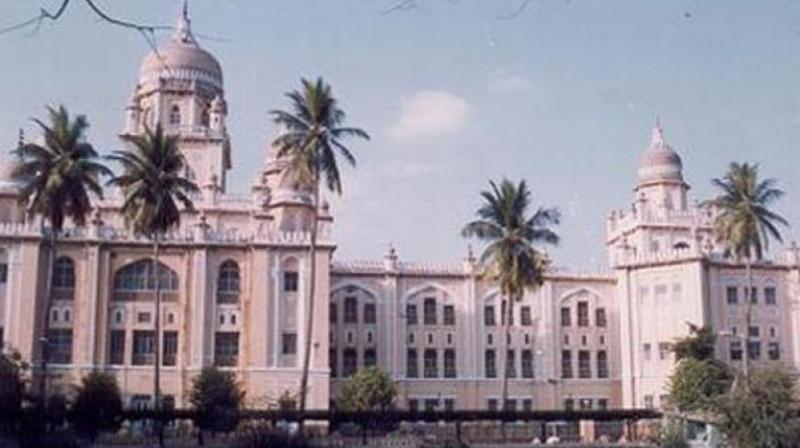Hyderabad:Mental health remains one of under-recognised public health challenges in Hyderabad, despite the city’s emergence as a thriving healthcare and technology hub. A large section of the population remains excluded from accessible and affordable mental healthcare.
According to Dr Vishal Akula, head of the psychiatry department at Government Medical College, Jagtial, the city’s healthcare progress has not been matched by mental health infrastructure. Private consultations in Hyderabad range between Rs 500 and Rs 2,000 per session. For families requiring continuous care — spanning therapy, medication, and follow-ups — this becomes an unsustainable financial burden.
Though government institutions like Osmania General Hospital and the Institute of Mental Health (IMH) offer services free of cost, they are often overwhelmed, with long waiting periods and limited specialist time per patient.
Accessibility is not just a question of cost but also of geography. Most qualified mental health professionals are concentrated in Hyderabad’s central and western zones. In contrast, the Old City, Malkajgiri, and suburban regions along the Outer Ring Road remain underserved.
In many such localities, people have no option but to either forego treatment or rely on unqualified alternatives. Despite IMH’s consistent efforts in offering counselling for depression, anxiety, and de-addiction, its potential is underutilised due to a lack of public awareness. Many still remain unaware that these affordable services even exist.
“Deep-rooted stigma and cultural myths further delay or prevent individuals from seeking help. Mental illnesses are often misinterpreted as spiritual afflictions or character flaws. People from traditional or conservative backgrounds frequently turn to religious or superstitious remedies, delaying access to evidence-based treatment,” Dr Akula said.
Nida Mir, counselling psychologist and founder of Hope Harbour, pointed out that even when mental health services are available, societal shame and misinformation make them inaccessible in practice. She emphasises that most community-based initiatives and grassroots services remain invisible to the public, overshadowed by larger institutions or hampered by a lack of institutional support.
“This disconnect is even more stark when one considers students and young adults. While some schools and colleges appoint counsellors, these services are typically sporadic and inadequate for long-term support. Students, particularly those from less open households, often suffer in silence. Without trauma-informed and culturally sensitive care, the emotional and psychological needs of the youth remain unmet. As Hyderabad becomes more competitive and fast-paced, mental distress among its younger population is quietly escalating,” she said.
The problem is compounded by a severe shortage of mental health professionals. Telangana, with a population of around 3.5 crore, has only about 600 registered professionals — well below the WHO recommendation of three per 100,000. “The Mental State of the World Report 2024 placed Hyderabad among the lowest-scoring metro cities, with 32 per cent of residents in distress — above the global average. Though more psychiatry seats have been added in recent years and young doctors are increasingly showing interest in the field, there remains a shortage of experienced specialists. There’s also a shortage of government schemes specifically targeting mental healthcare infrastructure and resources. Telangana has no dedicated mental health policy, though four per cent of its budget goes to general health,” said Dr Charan Teja Koganti, consultant psychiatrist at KIMS Hospital.
He added that even corporate hospitals hesitate to admit patients with psychiatric conditions due to fear of liability or reputational damage, despite being equipped to handle such cases. Mental health patients, therefore, are often denied admission even when in acute crisis.
Social stigma isn’t confined to communities — it permeates the healthcare system itself. Insurance companies, despite IRDAI mandates, frequently deny claims for mental health treatments. “Many hospitals see mental health patients as high-risk admissions, further shrinking the already limited care options for people in need of in-patient support. As a result, those suffering from chronic or severe mental illnesses — such as schizophrenia, bipolar disorder, or suicidal ideation — are often left without a safety net,” Dr Charan Teja said.
Affordability is a paradox in Hyderabad. While therapy costs may be seen as “reasonable” compared to international standards, they are still beyond the reach of most working-class families.
Dr M. Hrishikesh, associate professor, department of child psychiatry at Niloufer Hospital, said sessions priced at `1,500–`2,000 can be justified by the expertise and time spent with each patient, which is about an hour, but become expensive when long-term therapy is needed. “The pensions provided for psychological disabilities are meagre. Even institutions like the Mental Health Institute in Erragadda, which offers therapy for general issues, are stigmatised. The idea of visiting a psychiatric hospital itself becomes taboo,” he said.
Belsey, a software engineer at Accenture, shared her personal journey of navigating anxiety and interpersonal challenges through therapy. While her employer supported mental health, she still had to reorganise her monthly budget to accommodate therapy sessions. Despite therapy’s positive impact, which helped her identify anxiety triggers and manage emotional patterns, she noted how society often fails to distinguish between psychiatry and psychotherapy, lumping all mental health interventions into a narrow box of stigma and shame.
These challenges are magnified for marginalised communities. Women, Dalits, Adivasis, queer individuals, and religious minorities often find it difficult to access empathetic and competent care. Nida Mir added that many individuals from these communities want to work in mental health spaces but lack structured training, supervision, and sustainable income.
